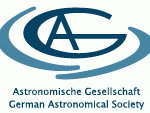In this paper we present a Monte Carlo radiative transfer technique for calculating synthetic spectropolarimetry for multi-dimensional supernova explosion models. The approach utilises “virtual-packets” that are generated during the propagation of the Monte Carlo quanta and used to compute synthetic observables for specific observer orientations. Compared to extracting synthetic observables by direct binning of emergent Monte Carlo quanta, this virtual-packet approach leads to a substantial reduction in the Monte Carlo noise. This is vital for calculating synthetic spectropolarimetry (since the degree of polarisation is typically very small) but also useful for calculations of light curves and spectra. We first validate our approach via application of an idealised test code to simple geometries. We then describe its implementation in the Monte Carlo radiative transfer code ARTIS and present test calculations for simple models for Type Ia supernovae.
Paper published in Monthly Notices of the Royal Astronomical Society, Volume 450, Issue 1, p.967-981, full text available at http://de.arxiv.org/abs/1503.07002

 On September 23/24 2014, I was co-chair of the splinter session
On September 23/24 2014, I was co-chair of the splinter session 





 We find that synthetic color light curves of our merger, which produces about 0.62 solar masses of 56Ni, show good agreement with those observed for normal SNe Ia in all wave bands from U to K. Line velocities in synthetic spectra around maximum light also agree well with observations. We conclude that violent mergers of massive white dwarfs can closely resemble normal SNe Ia. Therefore, depending on the number of such massive systems available these mergers may contribute at least a small fraction to the observed population of normal SNe Ia.
We find that synthetic color light curves of our merger, which produces about 0.62 solar masses of 56Ni, show good agreement with those observed for normal SNe Ia in all wave bands from U to K. Line velocities in synthetic spectra around maximum light also agree well with observations. We conclude that violent mergers of massive white dwarfs can closely resemble normal SNe Ia. Therefore, depending on the number of such massive systems available these mergers may contribute at least a small fraction to the observed population of normal SNe Ia.